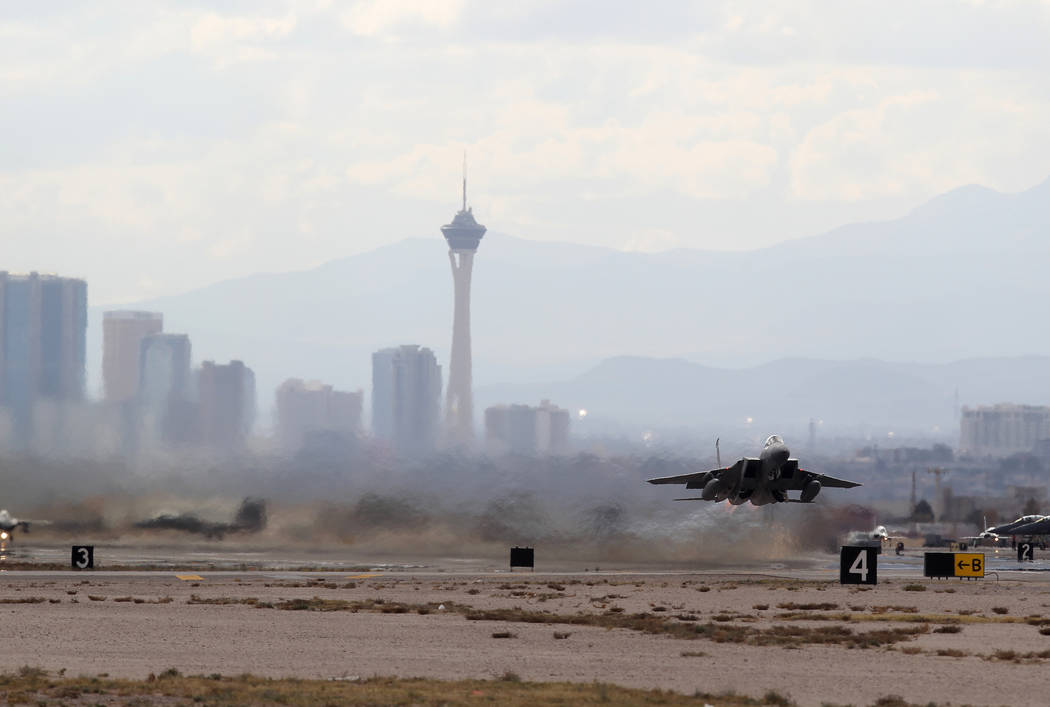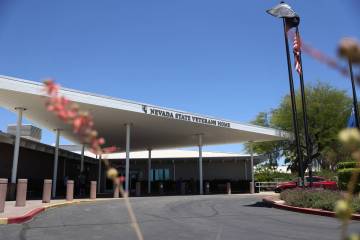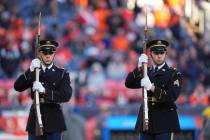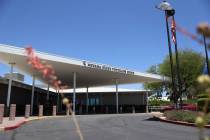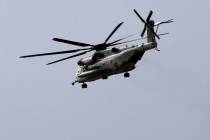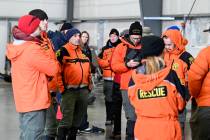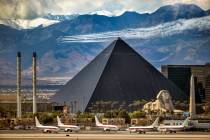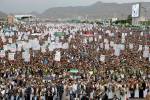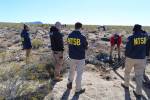Red Flag combat exercise at Nellis Air Force Base extended
The first Red Flag training exercise of 2018 at Nellis Air Force base has been extended for a third week as the Air Force seeks to adjust the simulated air combat to match the reality that the pilots are likely to face.
The realistic air combat training exercise aims to train U.S. fighter pilots and their allies through realistic aerial war games. In typical exercises, the friendly Blue forces engage enemy Red forces in various scenarios.
The U.S. Air Force has been doing a bit of “soul searching” over the exercise, Col. Chris Zuhlke, commander of the Nevada Test and Training Range at Nellis, said at a “media day” open house Tuesday. Over the past six months, the Air Force has been “trying to redefine or re-identify what Red Flag is,” he said.
Zuhlke explained that the purpose of the exercise has changed over the years to meet the demands of the real world.
“Our conflicts in Iraq and Afghanistan for a while changed that focus from a high-end fight to more of a counterinsurgency fight,” Zuhlke said. “So we focused more on that.”
Now, Red Flag is trying to prepare its pilots for both, prompting Zuhlke to extend it through Friday.
Three-day cycle
“The trade-off for that was the extension of that last week,” Zuhlke said. The exercise this time has shifted to a three-day cycle: one day for planning missions, one day for executing and one day spent entirely on debriefing.
The rationale goes back to the exercise’s original purpose, which was to better prepare pilots during the Vietnam War, when combat performance in the early years was considered subpar.
At the time, Col. Richard “Moody” Suter and Gen. Robert J. Dixon started the program based on analysis showing that lieutenants who survived their first 10 missions were likely to survive the entirety of the war. The first Red Flag exercises began November 1975.
The new three-day cycle allows pilots to get “their first 10 missions but do it in a manner that they can actually fly, come back, decompress, debrief and then plan for the next mission, rather than go from event to event, day to day, with no debrief opportunity,” Zuhlke said.
Royal Australian Air Force Group Capt. Tim Alsop said he was impressed by the effectiveness of the three-day format.
“For crew rest and safety you have to make sure that we put very strict boundaries around the length of people’s days, particularly the air crew,” Alsop said.
Accident recap
Alsop also addressed an on-board fire that caused the aborted takeoff of the Royal Australian Air Force’s EA-18G Growler last month.
The incident occurred around 10:45 a.m. on Jan. 27 on the base’s flight line. No serious injuries were reported in the incident.
“The crew did an amazing job. They conducted an emergency abort and brought the aircraft to a safe stop,” Alsop said “We then had a very rapid response from the Nellis first responders, the fire brigade here. They were quite astounding actually.”
The two crewmembers were uninjured, though both were “a little shaken,” Alsop said.
He declined to provide specifics about the accident, citing the ongoing investigation into the cause, but said that he was confident “we had a particular component failure on one of the engines.”
“We are confident we have identified what we think is the likely cause,” he said. The EA-18G aircraft resumed flying mid-last week.
Red Flag exercises take place several times a year over the 2.9-million-acre Nevada Test and Training Range. The next is scheduled March 9-23.
Contact Madelyn Reese at mreese@reviewjournal.com or 702-383-0497. Follow @MadelynGReese on Twitter.
Remaining Red Flags for 2018
— March 9-23.
— July 13-Aug. 3.



